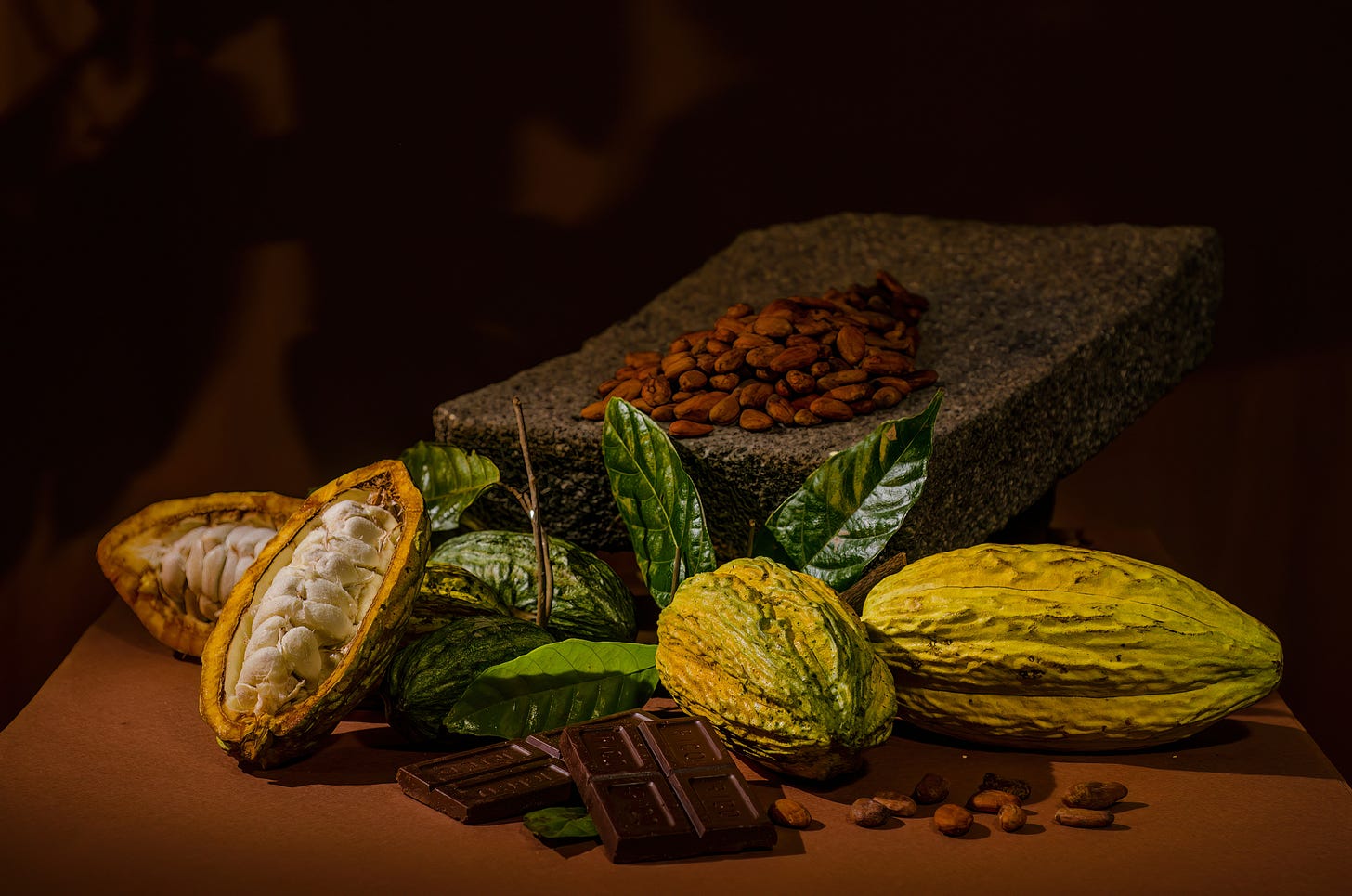Part 5: Land, Forests, and Future Generations, The Social and Environmental Costs of Ghana's Proposed State Cocoa Farms
Over the past four essays, one, two, three, and four, we have critically examined Ghana’s plan to establish 200,000 hectares of state-owned cocoa farms from multiple angles. We began by questioning the conflict of interest in Ghana’s Cocoa Board acting as both regulator and competitor to small farmers. We then discussed the misplaced priority of focusing on an export crop instead of food security. We explored how the government’s monopoly and new producer role might further squeeze smallholder farmers, and we just analysed how a massive boost in output could oversupply the cocoa market, risking a price crash. In this final part, I turn to what is perhaps the most tangible and irreversible aspect of this plan: its impact on land and forests, and the communities tied to them. As a cocoa farmer’s son, I know that land is everything. Our land is not just a factor of production; it is heritage, culture, and security. The soil under those cocoa trees has felt the footsteps of my grandfather and, hopefully, will feel those of my grandchildren. It is also part of a delicate environmental fabric. Cocoa in Ghana grows in what used to be lush tropical forests. Indeed, over the last century, smallholder cocoa farming has been a livelihood wreck with lots of business bias initiatives from lead actors promoting cocoa plantation expansion rather than value addition at the farmer level, farm level and the rural community level.
Now the government wants to find 200,000 hectares, about 2,000 square kilometres, for cocoa plantations. That land has to come from somewhere. Will it be carved out of the remaining forests? Will it be seized from small farmers? How does this align with Ghana’s commitments to end deforestation in cocoa supply chains and with new European laws that will ban cocoa linked to deforestation after 2020? What happens to the people living on or using that land currently? And what precedent does it set, if the government can do this, what stops big corporations from doing the same, marginalising small farmers globally? In this essay, I will argue that Ghana’s plan poses serious environmental risks, notably, potential deforestation and difficulty complying with international standards, and social risks, including land dispossession (land grabbing) and community displacement. Furthermore, I will draw on case studies, such as Ivory Coast’s harsh crackdown on illegal cocoa farming in forests and corporate plantation initiatives in other countries, to illustrate how such moves often lead to negative outcomes. Ghana stands to undermine its environmental credibility and sacrifice rural communities’ rights if it pursues land acquisition on this scale without careful safeguards.
Where Will 200,000 Hectares Come From? To visualise 200,000 hectares: it’s about four times the size of the Greater Accra region, or roughly 280,000 football pitches. Ghana is not a vast country; our arable land, especially in the fertile cocoa belt (Western, Ashanti, Brong-Ahafo, Eastern regions), is largely occupied by existing farms, villages, secondary forests, and, unfortunately, some degraded lands from mining. The Finance Minister’s announcement did not specify exactly where the land would be acquired, only that it was to “complement smallholder operations” and boost output. However, he did mention the need to rehabilitate disease-ravaged farms, especially in the Western Region, where the Cocoa Swollen Shoot Virus has hit hard. This gives a clue: a portion of this land might be areas where cocoa farms have died off due to disease. In Western North and parts of Ashanti, thousands of hectares have been affected by swollen shoot disease, and farmers have sometimes abandoned those plots or reluctantly cut down trees under COCOBOD’s directive. The government could target those lands, reasoning that they are already “cocoa lands” just in need of replanting. But those lands are not empty; they belong to farmers or families, even if currently unproductive. Taking them for state farms would effectively dispossess those farmers of their assets. Perhaps the government might propose to buy the land or compensate the owners. But selling land, for many farmers, is like selling one’s birthright. Remember that in Ghana, land is often owned customarily (by stools, clans, families), and individuals are caretakers or have user rights. How will the state navigate that? Compulsory acquisition laws in Ghana allow the government to take land for public interest with compensation. Is a cocoa plantation a public interest purpose? It’s not like building a road or a hospital; it’s essentially a commercial farming venture. It would be controversial if they tried to use eminent domain for this. If they instead try to lease or purchase from traditional authorities, will communities truly consent, and at what price? There’s a term that haunts Africa: “land grabbing.” It refers to powerful entities acquiring large swathes of land for commercial use at the expense of local communities. Ghana could be treading into that territory if not careful.
Keep reading with a 7-day free trial
Subscribe to Cocoa Diaries Newsletter to keep reading this post and get 7 days of free access to the full post archives.


